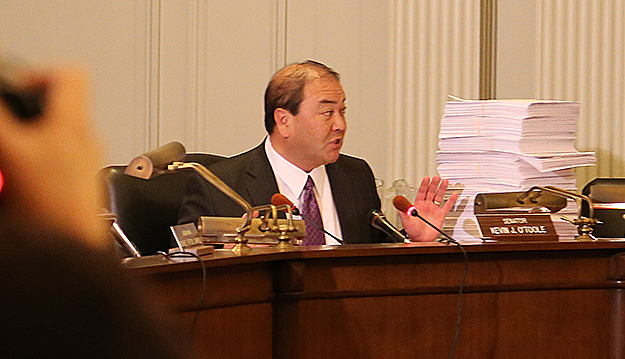Political Stagecraft

There is so much that happens in the world of politics that we could devote an entire War and Peace type book to this subject and still not dent the surface.
Having said that, I write this column today to get some to think broadly about political stage craft—
The Greeks were one of the first to pay mind to physical staging in the theatre. As I’m told from a dear Greek friend (Billy D), the Greeks have a word “SKENE” that means scene or scenery. Applied more liberally, the backdrop of a political stage can very much accentuate a critical political point or, when done incorrectly, can easily deflate or defeat the political messaging of the day.
Lesson of the day, be very mindful of stagecraft - the vision, the projected imagery, the words, and the scenery - when conveying a political message or capturing a political moment, subtle or obvious.
What am I talking about –
Smart politicians need to better appreciate political stage craft:
1- Dress for the part, nice suit or business attire is needed to convey confidence or dress down for an equally appropriate message about middle class issues or workers’ rights, what you wear is often a complement (or distraction) to the message. Look in the mirror before you open your mouth. Does the suit or tie convey strength or solicit a feeling? Does your outfit fit the messaging? If not, it should.
2- Know your audience – what is the message and to whom are you targeting? Most listeners tune out past 6 minutes, punch up the message and grab their attention early with a human interest or personal story. Start with something very topical and pivot quickly to your point.
3- When speaking use an outline or go from memory—reading a verbatim speech is best used when running for school president in the 8th grade, not on the Senate or Assembly floor or during a powerful press conference. Reading a prepared speech sounds a lot like someone reading a prepared speech (written by a staffer with Ivy league degrees and ZERO personal or political skills). Precise written text is best used with press releases and op-eds—a prepared speech usually lacks passion, innovation and conviction. Column on public speaking is in the works. Just saying --
4- The backdrop of the speech or Q & A can lend itself to reinforce the message. What is visualized? Is it compatible with the message? Have you even given any thought to staging and backdrop?
I remember myself on TV, the year was 1990 and I was Mayor of my town at the age of 25 and I couldn’t believe how goofy and immature I sounded. WOW. The Jerry Garcia tie didn’t quite lend itself to my message.
TIP--If you have a really important speech, practice and record yourself and be critical of how you look, sound, react and message. It can be a really be an eye opener.
Hardest lesson in politics (and in life) – see yourself as others see you, not as you see yourself. We all have warped images of who we are. Try and stand in the shoes of the viewers and see how that stage craft is working .





